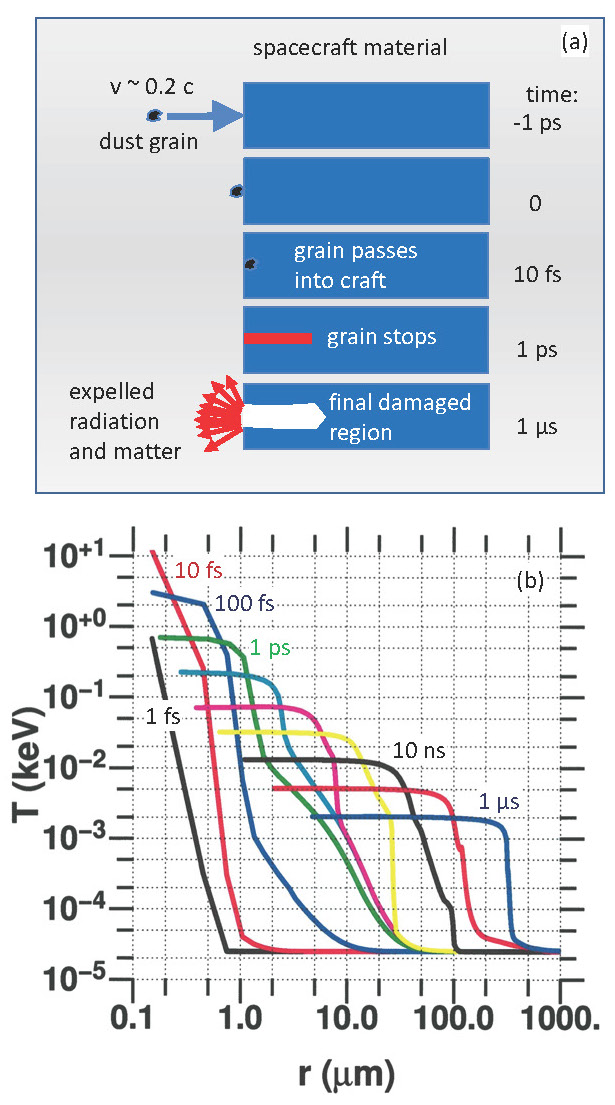Richard London (17-ERD-091)
Executive Summary
We are designing, performing, and analyzing computational simulations of high-speed collisions of spacecraft with dust grains—high-energy-density events that could affect the eventual deployment of light-propelled miniature spacecraft. We expect to provide a preliminary assessment of the degree of damage resulting from such collisions, including an assessment of mitigation methods.
Project Description
In our project, we are performing radiation-hydrodynamic simulations of collisions of micrometer-scale dust grains with interstellar spacecraft. This project is providing preliminary data that lays the groundwork for light-propelled miniature spacecraft that will travel beyond our galaxy. Our goal is to quantify the expected dust-grain damage to a spacecraft and to develop methods to mitigate this damage, thus enabling the survival of a spacecraft during its anticipated twenty-year-long journey. Because such spacecraft will be moving at extremely high speed (approximately 0.2 times the speed of light), each collision will create an ultrahigh-energy-density plasma with a temperature of approximately 20 keV and energy density of about 10 GJ/cm3. The nature of the interaction of a dust grain with a high-speed spacecraft is essentially high-energy-density science. The kinetic energy of the grain will be largely transferred to the spacecraft material, creating an initial super-hot cylinder with a radius approximately that of the dust grain (~1 µm) and a depth equal to that of the stopping length of the dust grain (between 10 and 1000 µm). The temperature of this heated cylinder is approximately 10 keV. To evaluate the size and volume of material that is ultimately eroded and/or damaged by this enormous energy deposition, we must determine how much of this initial energy is removed from the spacecraft by radiation and hydrodynamic flow, and how much remains to create a larger damaged volume.
We expect to provide a preliminary assessment of the degree of damage to interstellar spacecraft resulting from high-speed collisions with dust grains, including an assessment of methods that can be used to mitigate such damage. Initially, simulations will be conducted in one-dimensional geometry to determine the time-and-space dependence of lateral energy transport. Subsequent simulations will be conducted in two-dimensional cylindrical geometry to enable the calculation of energy loss from the surface of the spacecraft and to determine the size and volume of the damage.
Mission Relevance
This research supports the NNSA goal of strengthening the science, technology, and engineering base by broadening our understanding of future needs, and also supports the Laboratory’s high-energy-density science core competency.
FY17 Accomplishments and Results
This project was funded mid-year. In FY17, we (1) completed a review on interstellar dust grains; (2) assessed models for heavy-ion beam stopping; (3) performed preliminary one-dimensional calculations of the stopping of dust-grain ions by several proposed spacecraft materials using the radiation-hydrodynamics code HYDRA; and (4) performed performance and analysis of simulations.
Publications and Presentations
London, R. and J. Early. 2017. "Evaluation of the Hazard of Dust Impacts on Interstellar Spacecraft." Tennessee Valley Interstellar Workshop, Huntsville, AL, 3–6 October 2017. LLNL-PROC-739343.
   





